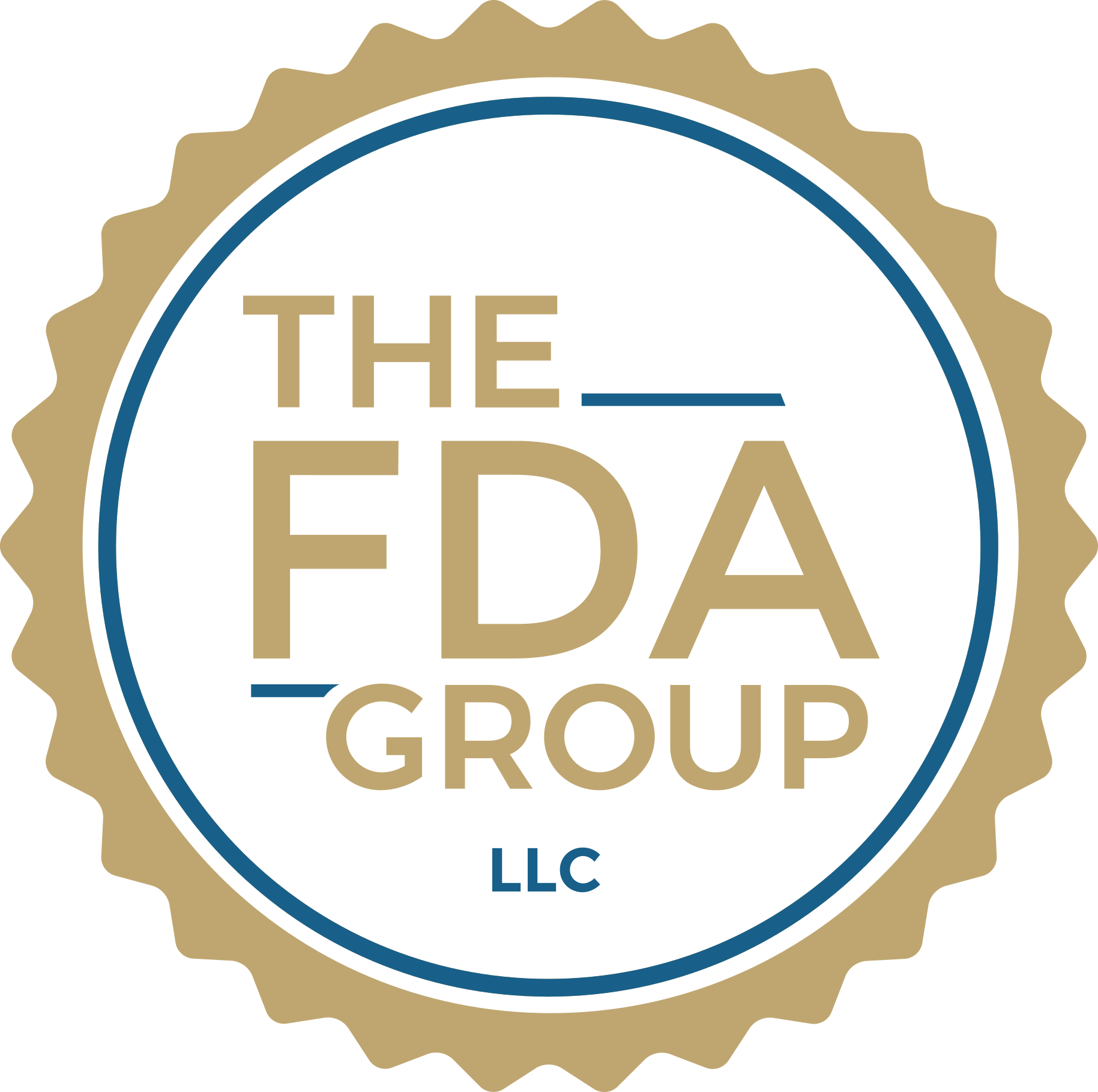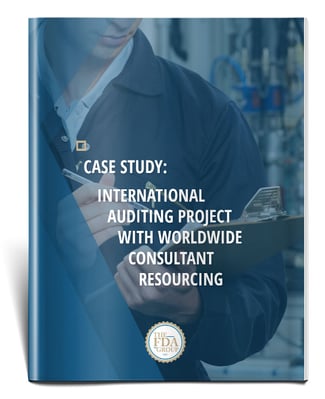If your time is short:
|
Audits are a mainstay in the pharmaceutical industry. Failing to understand what each audit addresses and the related FDA priorities can lead to gaps in compliance. This can result in warning letters, increased regulatory scrutiny, and penalties.
To successfully avoid regulatory deficiencies, it is recommended that companies periodically conduct mock audits. In this post, The FDA Group provides critical information on the differences between 3 types of audits:
- Good Clinical Practice (GCP),
- Good Laboratory Practice (GLP), and
- Current Good Manufacturing Practice (cGMP).
Strategies on how to maximize inspection readiness are also presented.
Good Clinical Practices (GCPs), Good Laboratory Practices (GLPs), and Good Manufacturing Practices (GMPs)
The major differences between the three types of audits are related to the progressive stages needed to bring pharmaceutical, biologic, and medical device product to market. The main concern in the case of GCP is the health, safety, and rights of the study participant; as well as documentation that the product creates more benefits than harms.
GLP does not involve human subjects, but nonclinical laboratory testing environment and materials. cGMP is focused on the manufacturing after successful clinical and nonclinical testing.
To navigate the regulatory requirements of each type of mandate, a comprehensive understanding FDA priorities is needed. In the remainder of this article, we take a deeper dive into GCP, GLP, and cGMP. Subsequent recommendations regarding leveraging effective audit processes are made.
GCP Audits
GCP governs how clinical research trials of human subjects must be conducted. Public safety is particularly critical to inspectors. The FDA may perform announced or unannounced inspections for a number of reasons:
- Protecting rights, welfare, and safety of study participants (therefore a focus on communication and informed consent).
- Assuring quality and validity of study data and results.
- Providing applicable protocols and standard operating procedures (SOPs) in conducting clinical research.
The frequency of GCP audits may vary according to study complexity. If a clinical trial involves potential for harm to study participants, leaders should attempt to initiate audits more frequently. Study sponsors should also consider requesting audits more often if there are previous unfavorable FDA inspections. Another red flag indicating the necessity of an audit may be if too many study participants start to resign or require study-related medical care.
Audit preparation includes decisions with all research and health care professionals on topic(s) of focus. Because human subject safety is of paramount concern to the FDA, topics often center on informed consent protocols. Sponsors are responsible for all outsourced clinical trial activities, such as CROs. Other examples include documentation of data validity and early detection of gaps in protocols.
Download our white paper on gap analyses and root cause determination for regulatory compliance.
In summary then, the study sponsor is responsible for all quality control systems, standard operating procedures and related documentation to assure safety and well-being of human subjects and all data generated in the process of the clinical trials.
Need help conducting GCP audits? Our quality professionals closely examine your particular study before planning and executing study-specific GCP audits of protocols, investigator sites, trial master files, pharmacovigilance, databases, and reports → GCP Auditing Services.
GLP Audits
The main goal of GLP regulations is to ensure compliance in the conducting of nonclinical laboratory studies. These studies investigate certain test articles and testing materials.
It is a required step in obtaining premarket approval of regulated products. The FDA has the authority to disqualify testing facilities for the following reasons:
- Failure to comply with one or more regulatory mandates.
- Non-compliance which negatively impacts study quality or validity.
- Other lesser regulatory issues such as corrective actions are inadequate in achieving compliance.
Formal FDA inspections occur at least every two years. Study sponsors should obtain their own third party audits at least annually or at various stages during the course of the specific study. Examples of topics in GLP can include organization of lab personnel, and adherence to Standard Operating Procedures (SOP).
To avoid contamination, documentation of the set-up, and cleanliness of the testing environment, chemical solutions, and equipment are of major concern to FDA regulators.
Need help conducting GLP audits? Our quality professionals plan and conduct comprehensive audits for all types of laboratories. We go beyond simply giving advice and guidance, taking an active role in solving laboratory quality issues, establishing a quality management system, preparing laboratory policies and SOPs, and planning routine monitoring and quality control test procedures → GLP Auditing Services.
cGMP Audits
Read our longer guide to GMP audits: A Basic Guide to Good Manufacturing Practice (GMP) Audits
In recent years, the FDA added a ‘c’ to the acronym of ‘Good Manufacturing Practice’ This stands for ‘Current.’ This decision was likely in response to difficulties in keeping up with technological advances in production. As stated by the FDA, “…requiring companies to use technologies and systems that are up-to-date in order to comply with the regulations. Systems and equipment that may have been ‘top-of-the-line’ to prevent contamination, mix-ups, and errors 10 or 20 years ago may be less than adequate by today's standards.”
The main area of focus in cGMP is the procedures of safe manufacturing, packaging, and processing of pharmaceutical products. Regulations serve to assure that drugs have the appropriate formulations and strengths that the sponsoring organizations purport them to have. Without the necessary clearances by the FDA, a drug cannot be brought to market.
There are four major types of cGMP inspections:
- Pre-approval of product
- Post-approval of product
- Product surveillance
- For-cause/directed (due to drug contamination, complaint)
- Microbiological contamination
- Lack of documentation deficiencies,
- Insufficient batch control records.
In deciding when to conduct and audit, organizations may wish to collaborate and coordinate with their respective quality management teams. Although quality assurance is an important aspect of GCP as well as GLP, it is particularly important in cGMP.
The quality systems approach in cGMP includes the coordinations of 5 subsystems:
- Production
- Materials
- Facilities and Equipment
- Packaging/labeling
- Laboratory Controls
Need help conducting cGMP audits? Our quality professionals bring direct experience in pharmaceutical, biotechnology, combination, and medical device development and manufacturing to help you understand and address quality assurance needs at every stage of product development → GMP Auditing Services.
Effective Preparation for a GCP, GLP, or cGMP Inspection Readiness
There are several ways in which life-science leaders can prepare for internal or external audits. It’s always helpful to first review past audit and FDA inspection results. This includes activities of all operations that the organization has outsourced. SOPs that are relevant to the chosen audit subject(s) should also be reviewed. Leaders can make best use of valuable time and resources by setting up a specific agenda that includes timelines and necessary personnel.
The FDA Group has extensive professional experience in conducting mock audits for leading organizations in every area of the life science industries. Proven strategies for success include extensive record review, to structured review of management controls/procedures, employee interviews, and facility tours. The ultimate result is obtainable recommendations for next steps and corrective and preventive action plans if needed. Learn more about each of our Auditing Services.
Final Thoughts and Next Steps
FDA inspections in GCP, GLP, and cGMP are critical for the successful achievement of maximum safety and effectiveness of pharmaceuticals, medical devices, and other medical products. Be that as it may, for industry leaders, it is a daunting and seemingly unending process.
The FDA Group has a proven track record in facilitating success for numerous life-science organizations. Such a partnership can assure high-quality product research and manufacturing, and most important, public safety.
Contact us to learn more and get the conversation started, download our free white paper and case study (below).
International Auditing Project with Worldwide Consultant Resourcing
Learn how The FDA Group partnered with a healthcare product Company to support a series of international Quality Audits to assess both Good Manufacturing Practices (GMP) and Good Clinical Practices (GCP) throughout the United States, Europe, Asia, and the Middle East.
Learn how we help life science organizations perform detailed audits in all of these areas to identify current and potential problems, recommend corrective and preventive actions, and work closely with internal staff to implement improvements: Auditing Services.


